- Home
- stock market
- Inside the dark, dirty way the world gets one of its biggest fuel sources
Inside the dark, dirty way the world gets one of its biggest fuel sources
China, which makes up roughly half of world demand for coal, has decreased its coal use, and even though the country continues to open coal-fired power plants, those plants sit idle. Here a villager selects coal near a mine on the outskirts of Jixi, in Heilongjiang province, China.

Coal consumption in the EU was flat last year, after declining in 2014, and in the UK, the last operating coal mine was shuttered in December last year. Miners leave after working the final shift at Kellingley Colliery. Kellingley is the last deep coal mine to close in England, bringing to an end centuries of coal mining in Britain.
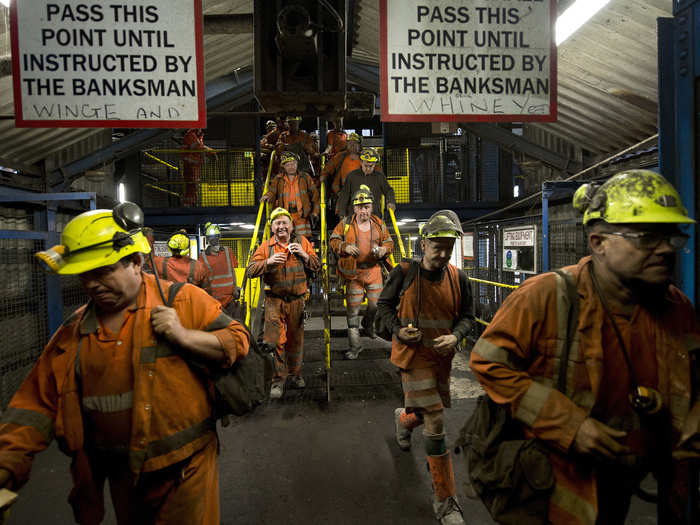
Source: Associated Press
Miners work about 500 meters underground at the Boleslaw Smialy coal mine, a unit of coal miner Kompania Weglowa (KW) in Laziska Gorne, Silesia, southern Poland, September 11, 2015. Coal mining has taken centre stage in the campaign for this month's parliamentary election in Poland, an outsize political role that threatens the country's hard-won economic growth and reputation in Europe.
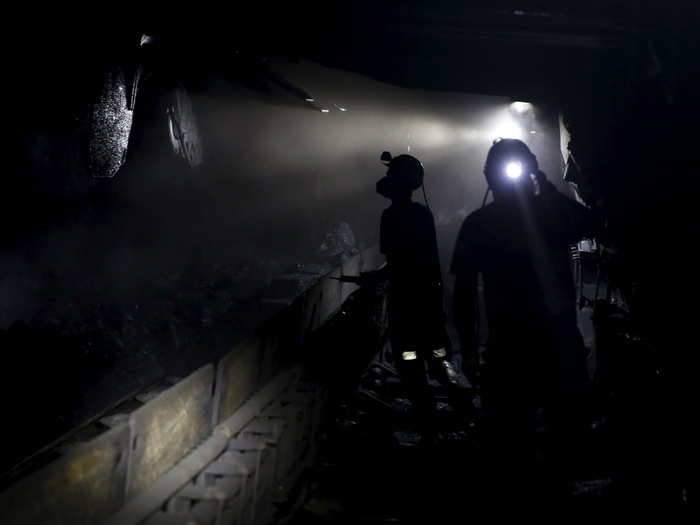
Coal miners eat as they break their fast during the holy month of Ramadan, 740 meters (2,427 feet) deep inside the Stara Jama coal mine, in Zenica, Bosnia and Herzegovina, July 15, 2015.
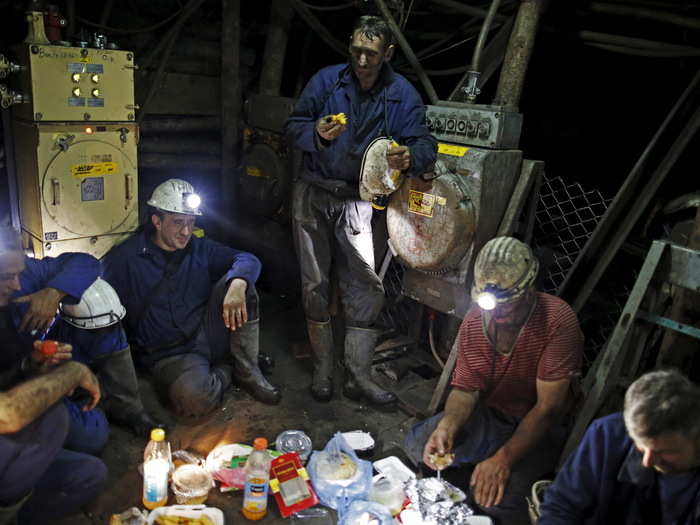
A miner waits for a bus after leaving Zasyadko coal mine in Donetsk, March 4, 2015. Dozens of miners were trapped underground and feared dead after a blast on Wednesday at a coal mine in the eastern Ukrainian rebel stronghold of Donetsk, with rescuers saying the chance of finding many survivors was slim.
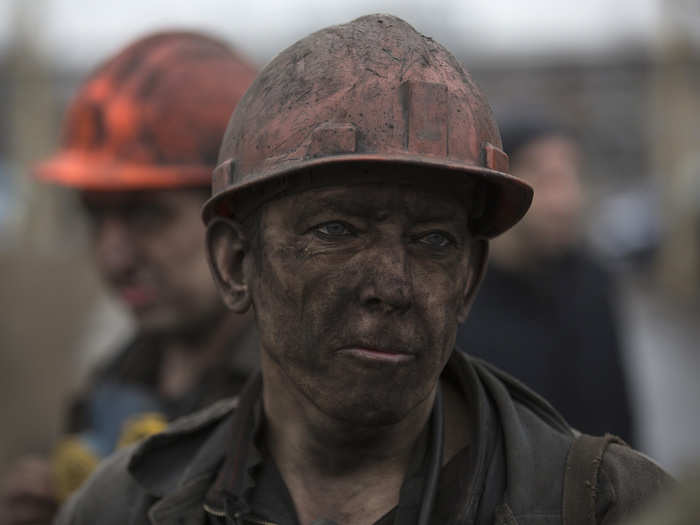
Miners prepare for their last working day at Hungary's last hard coal deep-cast mine at Markushegy, December 23, 2014. The underground mine, west of the capital city Budapest, has to stop producing coal at the end of this year in line with an EU effort to shut down uncompetitive hard coal mines.
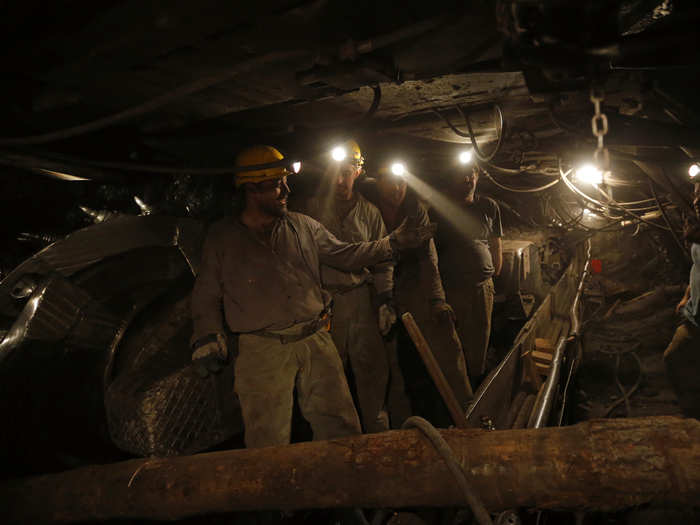
A laborer takes a break at a coal-dump site outside Mazar-i-Sharif, November 6, 2014.
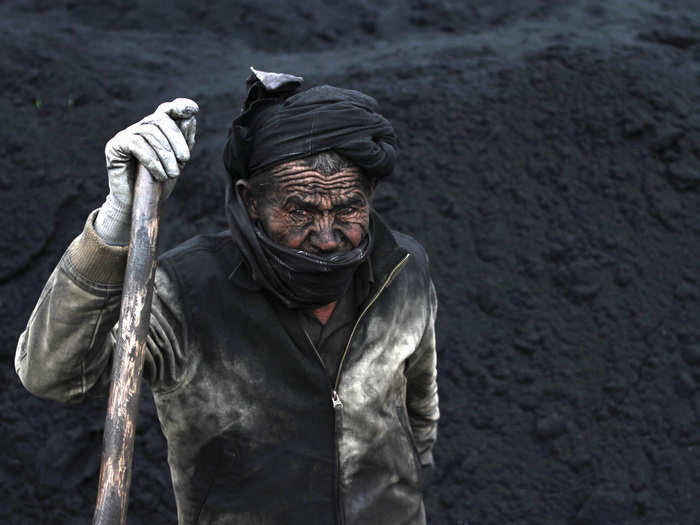
Miner Mohammad Ismail, 25, digs in a coal mine in Choa Saidan Shah, Punjab province, Pakistan, April 29, 2014.
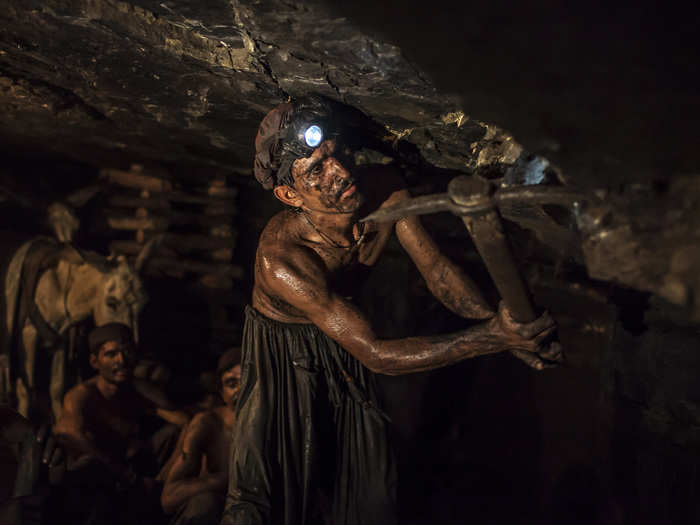
Workers at this mine in Choa Saidan Shah dig coal with pick axes, break it up, and load it onto donkeys to be transported to the surface.
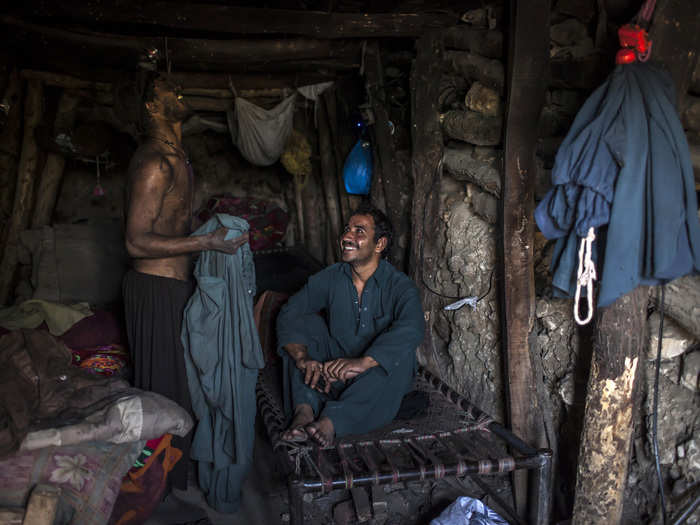
All in all, global demand for coal has stalled for the first time since the 1990s, according to the International Energy Agency, which expects coal’s share of global power generation to fall from 41% now to 37% by 2020, even has use rises in India and Southeast Asia. Here, a worker carries a container filled with drinking water at a railway coal yard on the outskirts of the western Indian city of Ahmedabad.
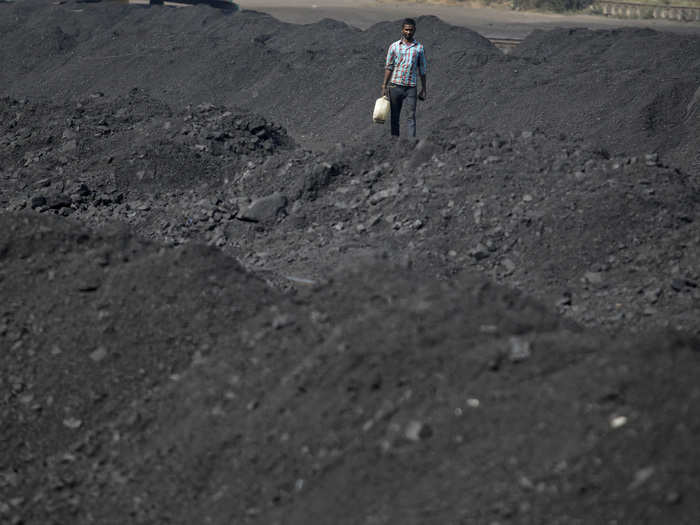
Source: Associated Press
More than 200 coal-powered plants are slated for retirement in the US, where coal's share of energy generation was 36% in 2015, down from 50% ten years prior. Coal miners enter a coal mine for the start of an afternoon shift near Gilbert, West Virginia.
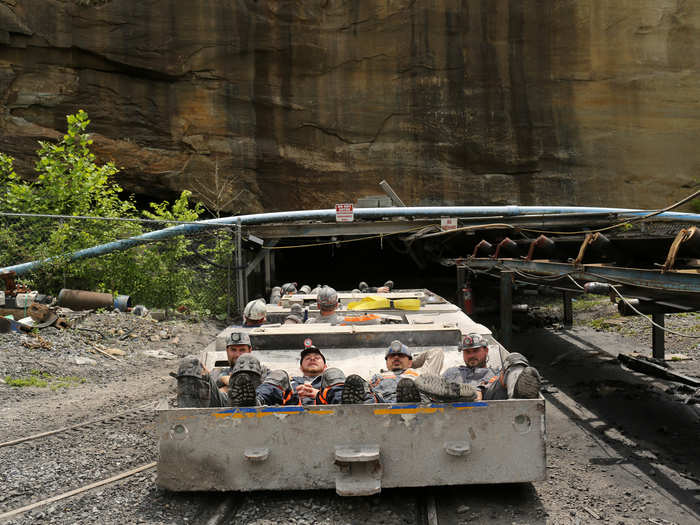
Source: Bloomberg
Workers unload coal from a truck into a stock field in Cigading harbour in Cilegon, Banten province, October 14, 2010. Indonesia, the world's top thermal coal exporter, may produce 340 million tonnes of coal in 2011, from an estimated 310 million tonnes in 2010, said the chairman of the Indonesian Coal Mining Association.
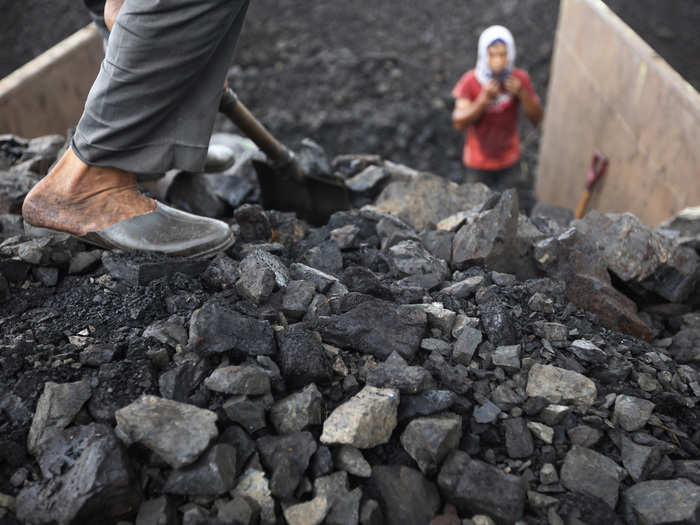
Steve Torgersen, a Norwegian mining expert, shows the size of a fossil footprint of a hippopotamus-like creature, a pantodont, on the roof of a coal mine on the Norwegian Arctic island of Spitsbergen, April 24, 2007.
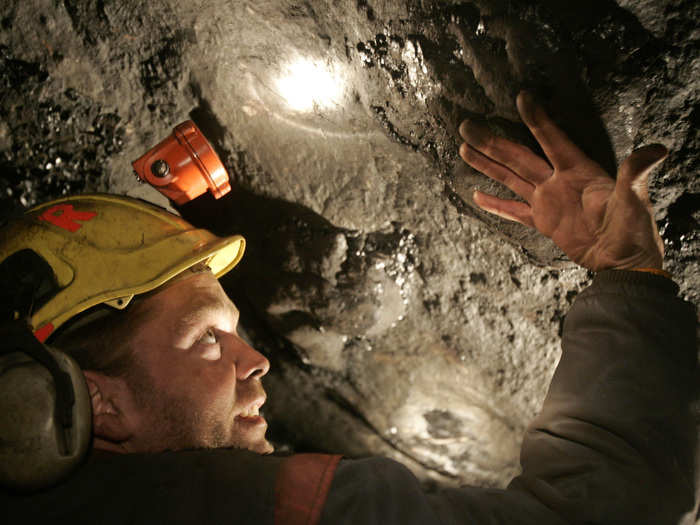
A coal miner registers the quantity of coal produced by each miner on an improvised chalkboard inside an artisanal mine, or "pocito," at the town of Nueva Rosita, Mexico, July 31, 2008. The mines, called "pocitos" or "little holes" and known for their rudimentary and often dangerous mining techniques, were trying to boost output as prices for imports soared and Mexico looked for more local coal to power up its electricity grid. Record high prices for fuel oil had pushed the country's state-run electricity commission, or CFE, to consider converting some of its plants to burn coal.
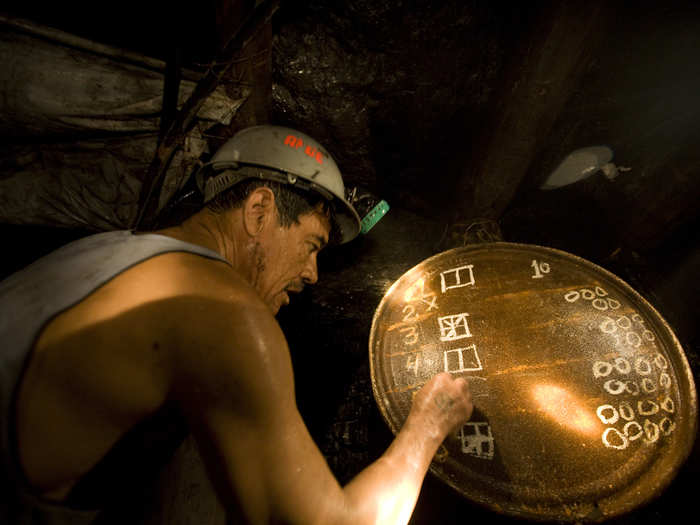
Rescuers carry a miner who sustained injuries after a mine explosion to an ambulance in Soma, a district in Turkey's western province of Manisa, May 14, 2014. Rescuers pulled more dead and injured from the coal mine in western Turkey more than 12 hours after an explosion, bringing the death toll to 201 in the nation's worst mining disaster for decades. Hundreds more were still believed to be trapped in the mine in Soma, around 120 km (75 miles) northeast of the Aegean coastal city of Izmir. The explosion triggered a fire in the mine.
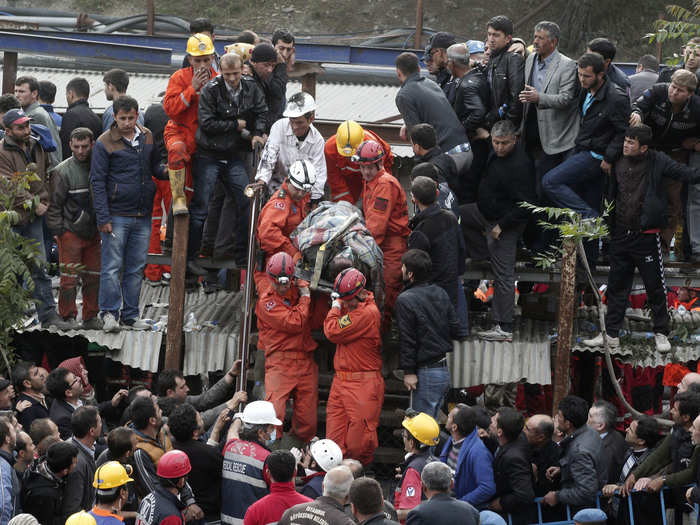
Popular Right Now
Popular Keywords
Advertisement